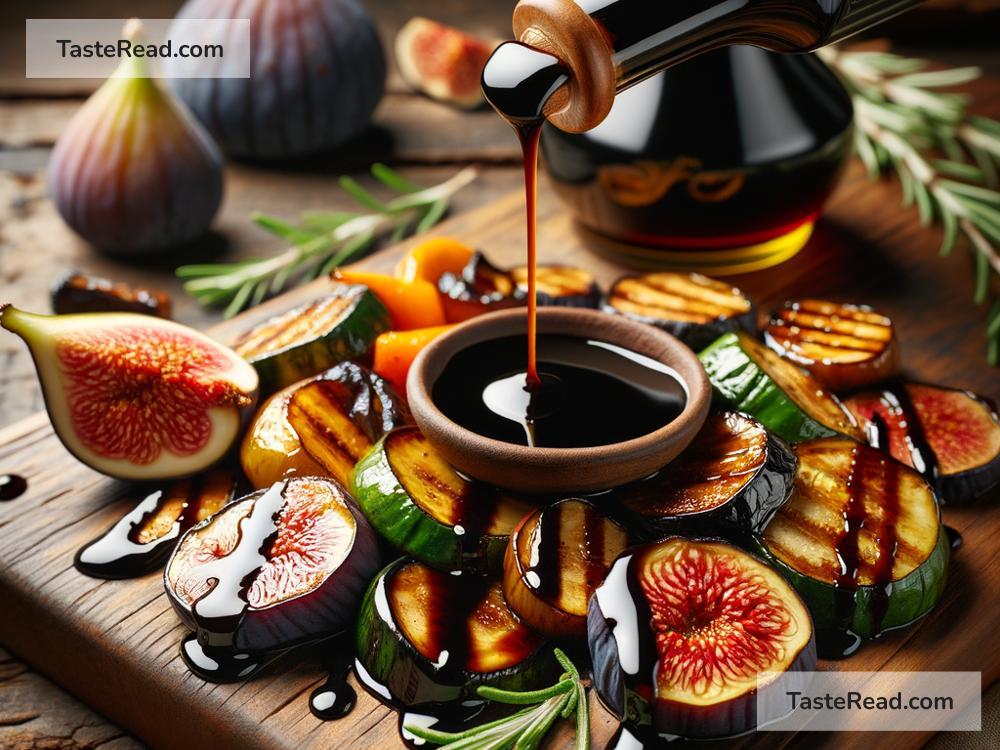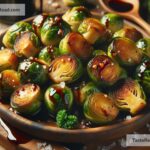How to Make Tangy Balsamic Fig Glaze at Home: A Simple Guide
If you’re searching for a way to take your favorite dishes to the next level, tangy balsamic fig glaze might be your answer. It’s sweet, rich, and packed with flavor, making it the perfect partner for everything from salads to roasted vegetables, meats, and even desserts. The good news? It’s surprisingly easy to make at home. Forget shelf-bought glazes—once you try this simple recipe, you’ll never look back.
Let’s dive into the basics of crafting your own tangy balsamic fig glaze, step by step.
What Is a Balsamic Fig Glaze?
Before we jump in, let’s take a quick look at what balsamic fig glaze is. At its heart, it’s a reduction—a sauce made by simmering balsamic vinegar and figs until it thickens into a syrupy consistency. The glaze achieves a perfect balance between tangy and sweet, with the figs bringing added richness and depth to the balsamic vinegar’s natural flavors.
Plus, it’s super versatile! You can drizzle it over grilled veggies, roasted chicken, crispy baguette slices topped with cheese, or even ice cream for a tantalizing treat. Once you make it yourself, you’ll realize how much it can elevate your cooking.
What You’ll Need
The ingredients are minimal and easy to find, so you won’t have to hunt down anything exotic.
-
½ cup balsamic vinegar: This is the star of the show. Opt for good-quality balsamic vinegar for the best flavor. It doesn’t need to be the most expensive bottle, but cheap vinegar won’t give you the depth of flavor that makes the glaze shine.
-
1 cup dried figs or fresh figs: Both dried and fresh figs work well for this recipe, depending on availability. If using dried figs, make sure they’re soft and not overly tough.
-
1–2 tablespoons honey or brown sugar: This adds a touch of sweetness and balances out the tanginess of the balsamic vinegar.
-
½ cup water: Helps soften the figs and ensures the glaze doesn’t reduce too quickly.
-
Pinch of salt (optional): A tiny bit of salt can enhance the flavors for a well-rounded result.
You’ll also need a saucepan for simmering, a strainer (optional), and a blender if you prefer a smoother glaze.
How to Make Tangy Balsamic Fig Glaze
Here’s the fun part—hands-on cooking! Follow these steps:
Step 1: Prep the Figs
If you’re using dried figs, cut them into small pieces. This helps them soften as they cook. If using fresh figs, simply halve them or quarter them. Removing stems from dried or fresh figs is optional but recommended for a smoother texture.
Step 2: Combine Ingredients
Add the balsamic vinegar, figs, honey (or brown sugar), and water to your saucepan. Stir gently to ensure everything is evenly mixed. Turn the heat to medium-low and bring the mixture to a gentle simmer.
Step 3: Simmer and Reduce
Let the mixture simmer for about 10–15 minutes, stirring occasionally. As the liquid reduces, it will start to thicken, and the figs will soften. Be patient—the magic happens as the vinegar and figs meld together during this slow cooking process.
If the glaze becomes too thick too quickly, you can add a splash of water to loosen it up. Keep a close eye to avoid burning.
Step 4: Blend (Optional)
Once the figs have softened and the mixture has thickened slightly, remove it from the heat. If you prefer a chunky glaze, you can leave it as is. If you want a silky-smooth glaze, transfer the mixture to a blender or food processor and blend until it reaches your desired consistency. Let it cool slightly before blending to avoid steam buildup.
Step 5: Strain (Optional)
For an extra-smooth texture, you can strain the blended glaze through a fine mesh strainer. This step removes any tiny fig seeds or leftover pulp. However, if you enjoy rustic, hearty textures, you can skip this part.
Storage Tips
Once your glaze has cooled, transfer it to an airtight container or jar. It can be stored in the refrigerator for up to two weeks. Always give it a quick stir before using, as it might thicken further in the fridge.
Ways to Use Your Balsamic Fig Glaze
Now that you’ve made your tangy balsamic fig glaze, it’s time to put it to good use! Here are a few ideas to get you started:
- Salads: Drizzle it over a simple arugula salad with goat cheese, walnuts, and fresh fruit.
- Meats: Brush it on grilled chicken, pork chops, or steak for an irresistible glaze.
- Veggies: Toss roasted Brussels sprouts, carrots, or asparagus with a spoonful of the glaze for an upgrade.
- Cheese Boards: Serve it alongside soft cheeses like Brie or blue cheese for dipping.
- Desserts: Add it to vanilla ice cream or drizzle over cheesecake for a surprising twist.
Final Thoughts
Creating tangy balsamic fig glaze at home is both fun and rewarding. With just a few simple ingredients and steps, you can make a versatile sauce that transforms your cooking. Once you master this recipe, you might find yourself experimenting with variations—adding spices like cinnamon or rosemary, or swapping honey for maple syrup.
Give it a try, and don’t be surprised if you start whipping up batches regularly. Your meals will never be the same!


